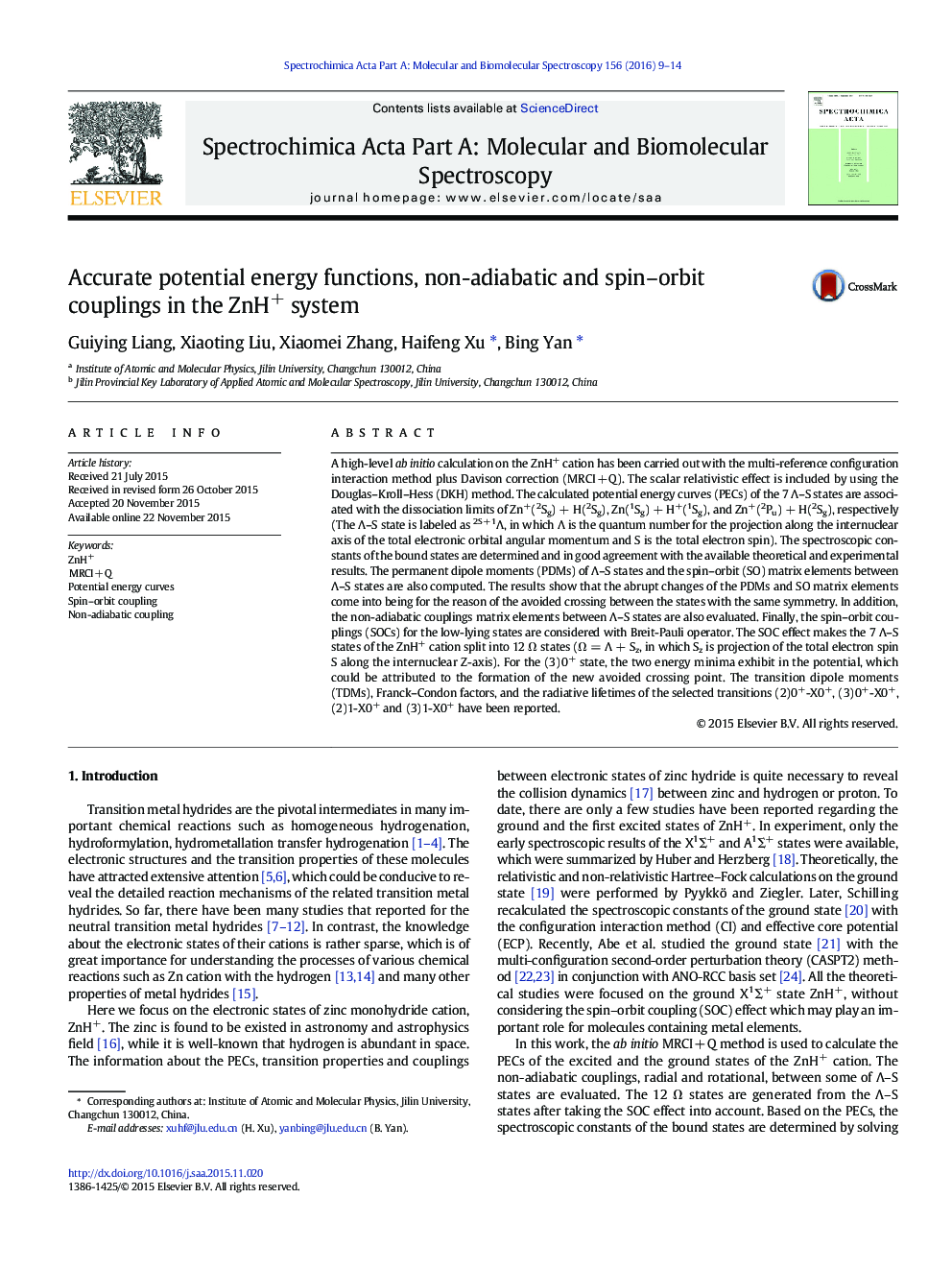| کد مقاله | کد نشریه | سال انتشار | مقاله انگلیسی | نسخه تمام متن |
|---|---|---|---|---|
| 1229524 | 1495213 | 2016 | 6 صفحه PDF | دانلود رایگان |

• The PECs of the 7 Λ–S states have been calculated.
• The non-adiabatic couplings of the Λ–S states have been calculated.
• The PDMs and SO matrix elements were computed to reveal the sudden changes at RACP.
• The PECs of the 12 Ω states generated from 7 Λ–S states have been calculated.
• The abrupt changes have been explained with the wavefunctions.
A high-level ab initio calculation on the ZnH+ cation has been carried out with the multi-reference configuration interaction method plus Davison correction (MRCI + Q). The scalar relativistic effect is included by using the Douglas–Kroll–Hess (DKH) method. The calculated potential energy curves (PECs) of the 7 Λ–S states are associated with the dissociation limits of Zn+(2Sg) + H(2Sg), Zn(1Sg) + H+(1Sg), and Zn+(2Pu) + H(2Sg), respectively (The Λ–S state is labeled as 2S + 1Λ, in which Λ is the quantum number for the projection along the internuclear axis of the total electronic orbital angular momentum and S is the total electron spin). The spectroscopic constants of the bound states are determined and in good agreement with the available theoretical and experimental results. The permanent dipole moments (PDMs) of Λ–S states and the spin–orbit (SO) matrix elements between Λ–S states are also computed. The results show that the abrupt changes of the PDMs and SO matrix elements come into being for the reason of the avoided crossing between the states with the same symmetry. In addition, the non-adiabatic couplings matrix elements between Λ–S states are also evaluated. Finally, the spin–orbit couplings (SOCs) for the low-lying states are considered with Breit-Pauli operator. The SOC effect makes the 7 Λ–S states of the ZnH+ cation split into 12 Ω states (Ω = Λ + Sz, in which Sz is projection of the total electron spin S along the internuclear Z-axis). For the (3)0+ state, the two energy minima exhibit in the potential, which could be attributed to the formation of the new avoided crossing point. The transition dipole moments (TDMs), Franck–Condon factors, and the radiative lifetimes of the selected transitions (2)0+-X0+, (3)0+-X0+, (2)1-X0+ and (3)1-X0+ have been reported.
The permanent dipole moment of the Λ–S states.Figure optionsDownload as PowerPoint slide
Journal: Spectrochimica Acta Part A: Molecular and Biomolecular Spectroscopy - Volume 156, 5 March 2016, Pages 9–14